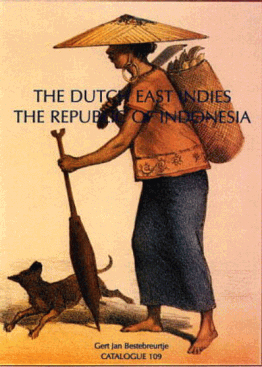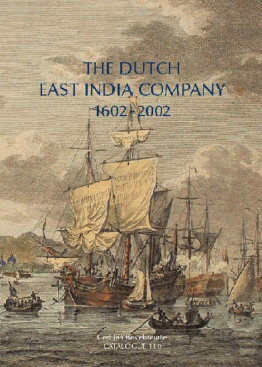Dutch colonial rule of Indonesia.
From Ad Engelfriet's web site.
"In the 1500s, the Netherlands were an important business center for Europe, where products from Russia, Scandinavia, Africa, Asia and America were bought and sold. The Netherlands during that time was ruled by Spain. By 1581, the Netherlands had rebelled against the King of Spain and had begun to govern themselves. But since Spain now had control of the Portuguese colonies, the Spanish could prevent Dutch businessmen from easy access to spices from the Indies."

History of the Dutch East Indies
This was one reason that Dutch ships began to make their own voyages direct to the Indies in the 1590s. Many Dutch sailors had worked on Spanish and Portuguese ships. When De Houtman's Dutch expedition set sail, there were experienced crewmen available to guide them to the Indies. The Dutch East India Company was given most of the powers of a sovereign state,
partly because communication between the Netherlands and Asia was so slow that colonial activities simply
could not be directed from Amsterdam.VOC stands for Vereenigde Oostindische Compagnie, or the Dutch East India Company.
Dutch Imperialism: 1870-1910 During this period the Dutch tried to take complete control of all the areas they claimed. This was the era of 'high imperialism', when powers such as Britain and France were
facing competition from new colonial powers such as Germany and Italy, and most unclaimed parts of Africa,
Asia and the Pacific were being taken by one power before another could get an opportunity. The 'Netherlands
Indies' were vital to the Dutch economy: the profits from coffee, tobacco, oil, and other products helped
finance the industrialization of the Netherlands. Europeans in the Indies, who controlled the economy and government, paid only 20% of the tax revenues of the Indies. Most of the tax burden still fell on native
Indonesians, in spite of the dismantlement of the culture system.
These revenues were used, among other things, to finance Dutch
military conquests in the outer islands. But it was not enough. In
time, the Dutch government was spending more money to support
the Netherlands Indies than it was collecting from the Indies in
revenues. Most of the cash flow from the Indies to the Netherlands
after 1900 was in the hands of private businesses."

Time line of Indonesian history
"The Dutch used the communist unrest as an excuse to arrest many
Indonesian leaders who were not communists. Sukarno in these
days was a strong nationalist. Even after the Netherlands had been
taken over by Nazi Germany, the Dutch still held onto their
colonies. For over a year and a half, the Netherlands East Indies
government continued to rule over Indonesia, reporting to the
Dutch government-in-exile. Efforts by Indonesian activists to
organize self-rule were ignored. The Netherlands Indies
government had few resources of its own. With the Netherlands
under control and the home government in exile in London, defense
of the area fell mostly to the British and Americans. When the
British lost Malaya and Singapore, and the Americans lost the
Philippines, the defense of the Netherlands Indies became hopeless. There was significant guerrilla activity against the Dutch during this
period, led by Nasution and Sudirman. At the height of Dutch
activity in the 1940s, there were around 150,000 Dutch forces in Indonesia. Indonesia made a unilateral
declaration of independence on August 17th 1945, two days after the end of the Japanese wartime occupation. The Dutch government thought it could simply reassert control
over its colony. For centuries, Indonesia had been a major source of
wealth for The Netherlands, as a major producer of pepper, rubber,
tea, sugar and petroleum. As many as 300,000 Dutch citizens left
Indonesia for the Netherlands during the early 1950's."

